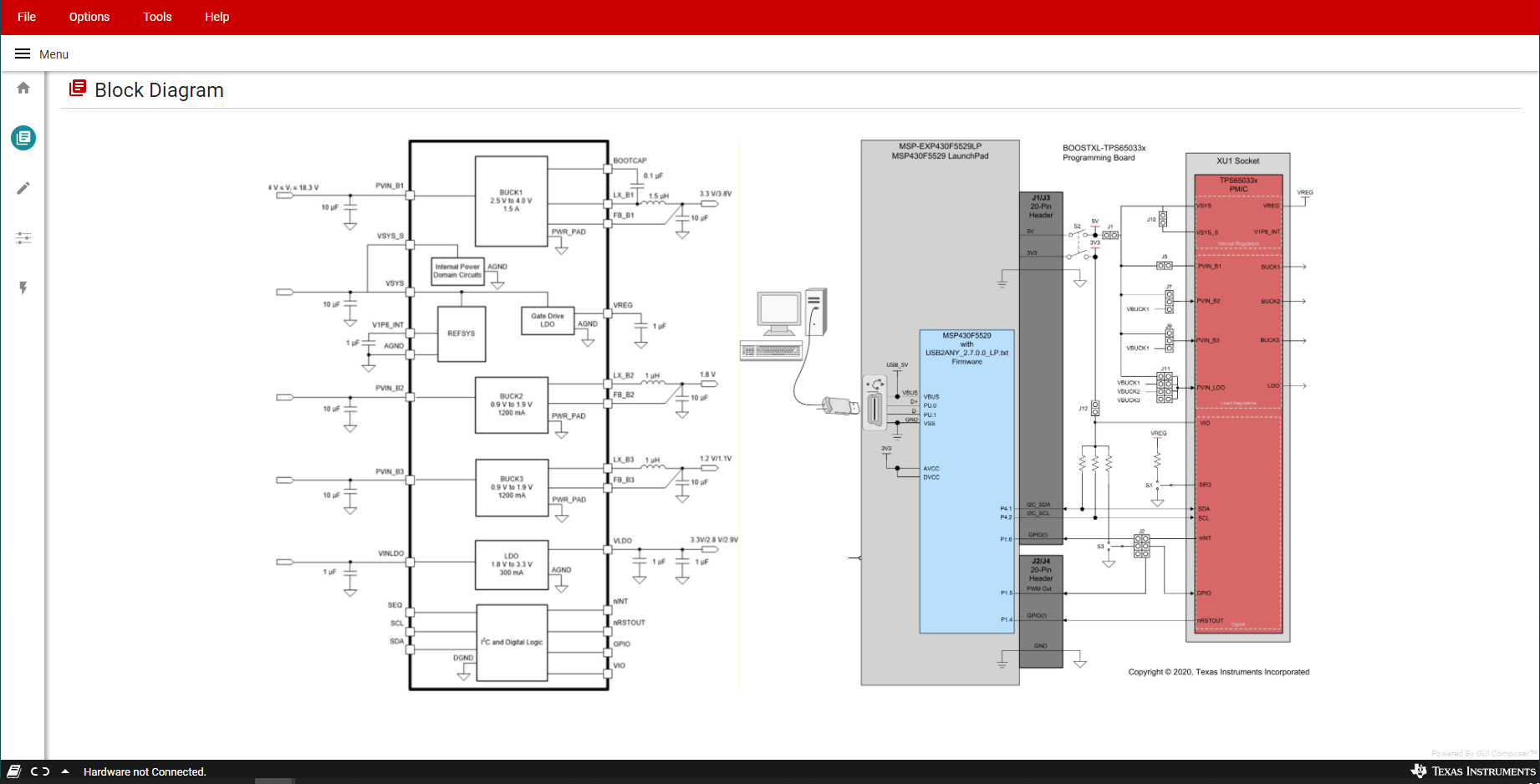SLVUC06 October 2020 TPS650320-Q1
- Trademarks
- 1Introduction
- 2EVM Configurations
- 3Test Points
- 4Graphical User Interface
- 5Typical Performance Plots
- 6TPS650320-Q1 EVM Schematic
- 7TPS650320-Q1 EVM PCB Layers
- 8TPS650320-Q1 EVM Bill of Materials
4.2.2 Block Diagram
The Block Diagram section displays the typical components and functional blocks of the PMIC. A block diagram for the Programming BoosterPack is also shown.
 Figure 4-5 TPS6503xx-Q1 GUI Block Diagram Page
Figure 4-5 TPS6503xx-Q1 GUI Block Diagram Page